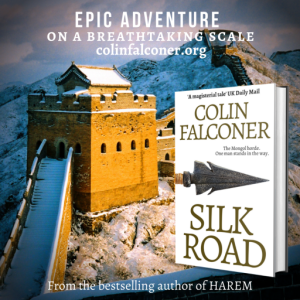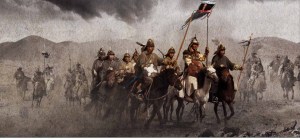Yes, there really was a city called Xanadu.
It wasn’t the fiction of some drug-fevered poet’s imagination. Shang-tu was once the summer capital of the Great Khan of the Mongols, Kublai Khan. We know this because westerners had been visiting Mongolia since 1246, when Pope Innocent IV sent one of his priests there, on what was surely the longest and most difficult embassy any diplomat has ever made.
At the time, the whole of Europe feared it would be overrun by the ‘Golden Horde’ - the Khan’s terrifying army had ravaged through Asia and the Middle East to even threaten Vienna. When King Wenceslas of Bohemia looked out, he didn’t see snow lying all about, he saw Mongol cavalry.
Meanwhile, the Crusaders in the Holy Land were in disarray, after two centuries of infighting. Even there, raids by Mongol horsemen had reached the gates of Jerusalem itself.
Desperate now, the Pope wondered if he might form an unholy alliance with the chieftain of these barbarians, and not only stem the tide in Europe, but have the Khan defeat his other ungodly Muslim enemies at the same time?
So a Franciscan friar called John of Plana set off along the Silk Road to what is now Mongolia, to put this bold plan to the test. He rode an astonishing three thousand miles in just over a hundred days to complete his mission. An incredible feat - and he did it twenty-five years before the much more celebrated Marco Polo.
The fabled Silk Road isn’t one single road; it is a spiderweb of paths and tracks - sometimes not even that - and no one back then had ever traveled the whole length of it. It was far too difficult and dangerous. Trade goods passed hands dozens of times along the way, trader to trader. It was like a game of pass the parcel, only with camels and bandits.
Somehow John of Plana managed it; and he was the inspiration for my own fictional Dominican monk, William, and his Templar bodyguard, Josseran Sarrazini. Like John, when they set out from the Kingdom of Jerusalem on their own great journey eastwards, they firmly believed they weren’t coming back.
Their odyssey to Xanadu began on the Mediterranean coast and led them across the Middle East, through Persia - still desolate from the scorched earth invasion of Genghis Khan forty years before - then on foot over the mountains of the Hindu Kush - ‘the Roof of the World’. After that, they faced the notorious desert of the Taklimakan, which means literally: ‘go in and you won’t come out’.
Camels were known to die of thirst on the crossing. The Taklimakan was also feared for its black hurricanes, towering tornadoes of grit and pebbles that could swallow up whole caravans.
Even then, their troubles weren’t over:
“Some say that in the land of Cathay there are creatures with heads like dogs who bark and speak at the same time. Others say there are ants as big as cattle. They burrow in the earth for gold and tear anyone who comes across them to pieces with their pincers.”
There were more surprises: in the west, women were still considered the private property of their fathers or husbands. So the ways of the warrior nomads of the high steppes were a real shock. Tatar women had the right to choose their husbands - and had vigorous ways of enforcing those rights.
A marriage suitor would ride bare-chested around his chosen bride, who was handed a rawhide whip. If she liked the boy and favoured the match he might get a few light strokes across his back to test him out before she assented. But if she wasn’t keen, she would beat him bloody until he’d had enough and went home.
Josseran and William’s journey led them at last to Kublai Khan’s capital Shang-tu - the legendary “Xanadu”. There, they faced the most herculean task of all - trying to convince the Great Khan of the Golden Horde to agree to an alliance. Then the greatest surprise of all - there were already Christian churches in Cathay. The greatest objection to an accord with the Pope came not from the Khan - but from the local archbishop.
So, like every good story, there were twists.
Today, the fabled city of Xanadu is just a pile of old stones in Zhenglan Banner in Inner Mongolia, and its founder, Khublai, is long gone. But the legends of its exotic past live on, to fire the imagination…

From the Storehouse of Winds to the Palace of Myriad Tranquillities, from the Pamirs and Hindu Kush to the legendary Xanadu and the dazzling court of Khubilai Khan, this is adventure on a breath-taking scale.
“A magisterial tale.” UK Daily Mail
“The plot is rich and sure to keep the reader focused on turning the page to learn what happens next – and always to some shocking circumstance or pleasant surprise… plenty of the odd and unusual to keep me fascinated throughout. It is the richness of the prose itself that truly made this historical era come alive.” Historical Novel Review
“It’s wonderfully written, the characters gripping and with an epic story to unfurl within, it’s one that keeps you going from the start to the end.” Falcatta Times.
Updated and revised 2021 edition. Available as a Kindle eBook, paperback or hardback on AMAZON.




